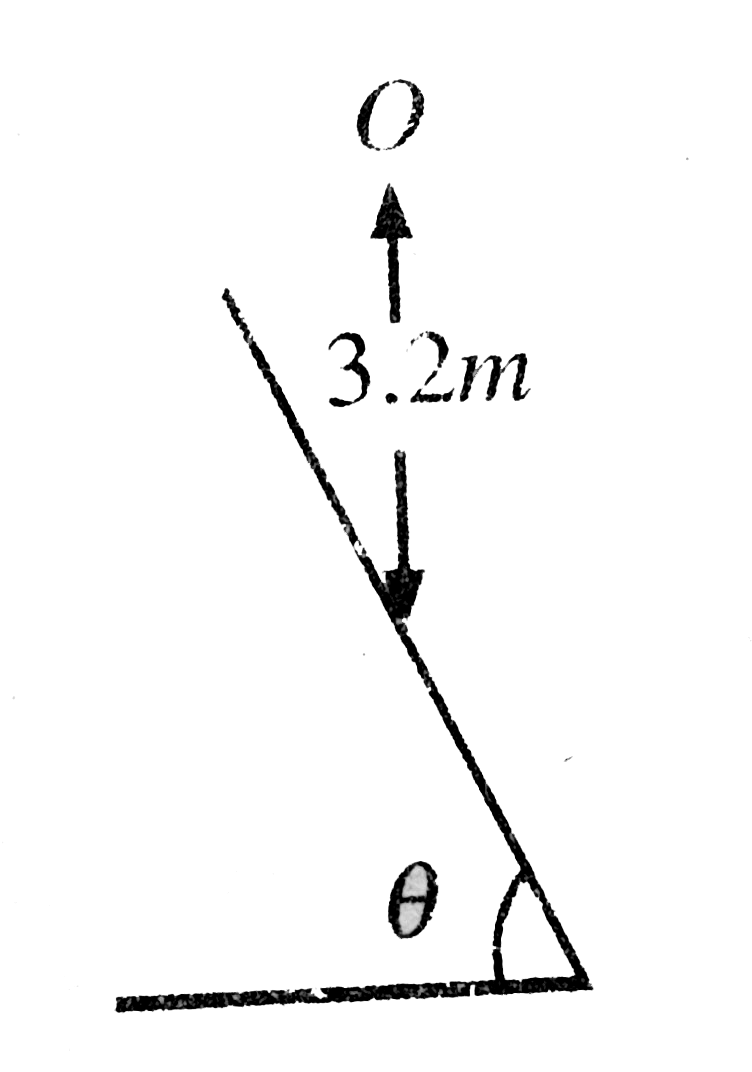A ball is dropped from a height of 20 m in the floor and rebounds to 1.25 m after second collision, then coefficient of restitution e is
12
15
13
14
To find the coefficient of restitution e for the ball dropped from a height of 20 m and rebounding to a height of 1.25 m after the second collision, we can follow these steps:
1. Determine the velocity just before the first collision:
- The ball is dropped from a height h1=20 m. Using the principle of conservation of energy, the potential energy at the height will convert to kinetic energy just before the collision.
- The potential energy at height h1 is given by:
PE=mgh1=mg⋅20
- The kinetic energy just before the first collision is:
KE=12mv2
- Setting these equal gives:
mg⋅20=12mv2
- Canceling m from both sides:
20g=12v2
- Rearranging gives:
v2=40g⇒v=√40g
2. Determine the velocity just after the second collision:
- After the second collision, the ball rebounds to a height h2=1.25 m. Again, using conservation of energy:
- The potential energy at height h2 is:
PE=mgh2=mg⋅1.25
- The kinetic energy just after the second collision is:
KE=12mV22
- Setting these equal gives:
mg⋅1.25=12mV22
- Canceling m:
1.25g=12V22
- Rearranging gives:
V22=2.5g⇒V2=√2.5g
3. Relate the velocities using the coefficient of restitution:
- The coefficient of restitution e relates the velocities before and after the collision. The velocity after the second collision can be expressed as:
V2=e2v
- Substituting the values we found:
√2.5g=e2⋅√40g
4. Solve for e2:
- Squaring both sides gives:
2.5g=e4⋅40g
- Canceling g:
2.5=40e2
- Rearranging gives:
e2=2.540=116
5. Find e:
- Taking the square root:
e=√116=14
Final Answer:
The coefficient of restitution e is 12.
- The ball is dropped from a height h1=20 m. Using the principle of conservation of energy, the potential energy at the height will convert to kinetic energy just before the collision.
- The potential energy at height h1 is given by:
PE=mgh1=mg⋅20
- The kinetic energy just before the first collision is:
KE=12mv2
- Setting these equal gives:
mg⋅20=12mv2
- Canceling m from both sides:
20g=12v2
- Rearranging gives:
v2=40g⇒v=√40g
- After the second collision, the ball rebounds to a height h2=1.25 m. Again, using conservation of energy:
- The potential energy at height h2 is:
PE=mgh2=mg⋅1.25
- The kinetic energy just after the second collision is:
KE=12mV22
- Setting these equal gives:
mg⋅1.25=12mV22
- Canceling m:
1.25g=12V22
- Rearranging gives:
V22=2.5g⇒V2=√2.5g
- The coefficient of restitution e relates the velocities before and after the collision. The velocity after the second collision can be expressed as:
V2=e2v
- Substituting the values we found:
√2.5g=e2⋅√40g
- Squaring both sides gives:
2.5g=e4⋅40g
- Canceling g:
2.5=40e2
- Rearranging gives:
e2=2.540=116
- Taking the square root:
e=√116=14
The coefficient of restitution e is 12.
Topper's Solved these Questions
Similar Questions
A rubber ball is dropped from a height of 5 m on a plane. If bounces back to a height of 1.8 m. Find the coefficient of the resitution for the collision.
View SolutionA ball is dropped on a horizontal surface from height h. If it rebounds upto height h2 after first collision then coefficient of restitution between ball and surface is
View Solution
Knowledge Check
A ball his the floor and rebounds after inelastic collision. In this case
AThe momentum of the ball just after the collision is the same as that just before the collision.Bthe mechanical energy of the ball remains the same in the collisionCthe total momentum of the ball and the earth is conservedDthe total energy of the ball and earth is conserved
A ball falls on the ground fro a height of 2.0 m and rebounds up to a height of 1.5 m. Find the coefficient of restitution.
View SolutionA 1.0 kg ball drops vertically into a floor from a height of 25 cm . It rebounds to a height of 4 cm. The coefficient of restitution for the collision is
View SolutionA plastic ball falls from a height of 4.9 metre and rebounds several times from the floor. What is the coefficient of restitution during the impact with the floor if 1.3 seconds pass from the first impact to the second one ?
View SolutionA ball dropped from a height of 2 m rebounds to a height of 1.5 m after hitting the ground. Then fraction of energy lost is
View SolutionA ball of mass 1kg is dropped from a height of 3.2m on smooth inclined plane. The coefficient of restitution for the collision is e=1/2. The ball's velocity become horizontal after the collision.

View SolutionA ball hits a floor and rebounds after an inelastic collision. In this case
View SolutionA partical falls from a height h upon a fixed horizontal plane and rebounds. If e is the coefficient of restitution, the total distance travelled before rebounding has stopped is
View Solution
